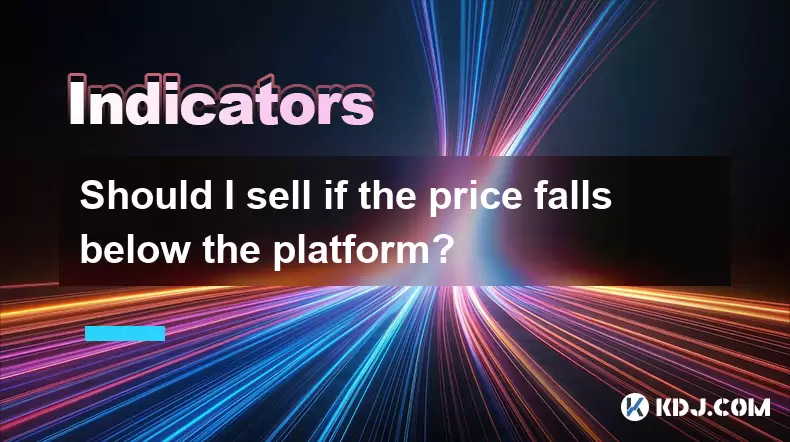-
 Bitcoin
Bitcoin $120200
1.20% -
 Ethereum
Ethereum $4612
9.01% -
 XRP
XRP $3.274
4.27% -
 Tether USDt
Tether USDt $0.9999
-0.02% -
 BNB
BNB $835.0
3.28% -
 Solana
Solana $192.6
10.00% -
 USDC
USDC $0.9998
0.00% -
 Dogecoin
Dogecoin $0.2362
5.94% -
 TRON
TRON $0.3522
1.87% -
 Cardano
Cardano $0.8418
8.70% -
 Chainlink
Chainlink $23.47
10.76% -
 Hyperliquid
Hyperliquid $45.03
4.26% -
 Stellar
Stellar $0.4503
4.40% -
 Sui
Sui $3.887
6.24% -
 Bitcoin Cash
Bitcoin Cash $618.8
6.66% -
 Hedera
Hedera $0.2609
5.53% -
 Ethena USDe
Ethena USDe $1.000
-0.02% -
 Avalanche
Avalanche $24.68
7.86% -
 Litecoin
Litecoin $130.9
8.67% -
 Toncoin
Toncoin $3.505
3.79% -
 UNUS SED LEO
UNUS SED LEO $9.117
1.48% -
 Shiba Inu
Shiba Inu $0.00001356
4.56% -
 Uniswap
Uniswap $11.59
4.75% -
 Polkadot
Polkadot $4.149
7.26% -
 Dai
Dai $0.9998
-0.04% -
 Cronos
Cronos $0.1646
-1.10% -
 Ethena
Ethena $0.8028
0.57% -
 Pepe
Pepe $0.00001218
8.33% -
 Bitget Token
Bitget Token $4.466
1.62% -
 Aave
Aave $322.4
9.58%
Should I sell if the price falls below the platform?
When deciding to sell crypto if the price falls below the platform, consider your strategy, risk tolerance, market conditions, and technical indicators.
Jun 03, 2025 at 09:35 pm

When deciding whether to sell a cryptocurrency if the price falls below the platform, it's essential to consider several factors. Understanding the platform is crucial, as it refers to the support level in technical analysis. This level is where the price tends to find support as it falls, and it can act as a key indicator for making trading decisions. If the price drops below this level, it might signal a further decline, prompting some investors to sell to minimize losses.
However, the decision to sell should not be made hastily. Evaluating your investment strategy is vital. Are you a long-term holder, or are you engaging in short-term trading? If you're a long-term investor, a temporary drop below the platform might not be a reason to sell, especially if you believe in the fundamental value of the cryptocurrency. On the other hand, if you're a trader looking to capitalize on short-term price movements, selling when the price falls below the platform could be a strategic move to protect your capital.
Risk tolerance plays a significant role in this decision. If you have a low tolerance for risk, you might be more inclined to sell when the price drops below the platform to avoid further potential losses. Conversely, if you have a higher risk tolerance, you might choose to hold onto your investment, anticipating a rebound in the price.
It's also important to consider the broader market conditions. Is the entire market experiencing a downturn, or is the drop specific to the cryptocurrency you're holding? If the whole market is declining, selling might not be the best strategy, as you could end up buying back at higher prices later. However, if the drop is isolated to your specific cryptocurrency, it might be a sign of underlying issues that could warrant selling.
Finally, technical analysis tools can provide additional insights. Besides the platform, consider other indicators like moving averages, RSI, and volume. If multiple indicators suggest a bearish trend, selling might be justified. However, if the indicators are mixed or suggest a potential reversal, holding might be a better option.
Understanding the Platform in Technical Analysis
In technical analysis, the platform, or support level, is a price point where a downtrend is expected to pause due to a concentration of demand. As the price of a cryptocurrency approaches this level, buying interest tends to increase, preventing the price from falling further. When the price falls below the platform, it can indicate that the demand at that level was not strong enough to hold the price up, potentially signaling a continuation of the downtrend.
Identifying the platform involves looking at historical price data to find where the price has bounced back from in the past. Many traders use charting software to draw horizontal lines at these levels, which helps in visualizing where the platform might be. If the price consistently finds support at a certain level, that level becomes a critical platform to watch.
Breaking below the platform can be a significant event. It often leads to increased selling pressure as traders who were waiting for the price to bounce back from the platform decide to exit their positions. This can create a self-fulfilling prophecy, where the price continues to fall as more traders sell.
However, it's important to note that a break below the platform does not always mean the end of a bullish trend. Sometimes, the price can fall below the platform temporarily and then recover. This is known as a false break or a bear trap. In such cases, traders who sold too quickly might miss out on potential gains if the price rebounds.
Evaluating Your Investment Strategy
Your investment strategy is a critical factor in deciding whether to sell when the price falls below the platform. If you're a long-term investor, your focus is likely on the fundamental value of the cryptocurrency rather than short-term price fluctuations. In this case, a drop below the platform might not be a reason to sell, especially if you believe the cryptocurrency has strong long-term potential.
For short-term traders, the situation is different. These traders often use technical analysis to make quick decisions based on price movements. If the price falls below the platform, it might signal a good time to sell and take profits or cut losses. Short-term traders need to be more responsive to market changes and might have a lower threshold for selling.
Diversification is another aspect of your investment strategy to consider. If you have a diversified portfolio, a drop in one cryptocurrency might not significantly impact your overall investment. In this case, selling might not be necessary unless the drop is severe and threatens your overall portfolio balance.
Assessing Your Risk Tolerance
Risk tolerance is a personal factor that can greatly influence your decision to sell. If you have a low risk tolerance, you might be more inclined to sell when the price falls below the platform to protect your capital. This approach aims to minimize potential losses, even if it means missing out on potential future gains.
On the other hand, if you have a high risk tolerance, you might be more willing to hold onto your investment despite the price drop. This approach is based on the belief that the price will eventually recover, and you're willing to weather the short-term volatility for potential long-term gains.
Understanding your risk tolerance involves assessing how much financial loss you can handle without it affecting your overall financial stability or peace of mind. It's important to be honest with yourself about your risk tolerance, as it can help you make more informed decisions about when to sell.
Considering Broader Market Conditions
Broader market conditions can provide valuable context for your decision to sell. If the entire cryptocurrency market is experiencing a downturn, a drop below the platform for your specific cryptocurrency might be less concerning. In such cases, selling might not be the best strategy, as you could end up buying back at higher prices when the market recovers.
However, if the drop is specific to the cryptocurrency you're holding, it could be a sign of underlying issues. Perhaps there's negative news or developments related to the project that are causing the price to fall. In this scenario, selling might be a more justified decision, especially if you believe the issues are likely to persist.
Monitoring market sentiment can also be helpful. If there's a general sense of pessimism in the market, it might be more challenging for the price to recover quickly. Conversely, if market sentiment is positive, a drop below the platform might be seen as a buying opportunity rather than a reason to sell.
Using Technical Analysis Tools
Technical analysis tools can provide additional insights to help you decide whether to sell when the price falls below the platform. Moving averages are one of the most commonly used tools. If the price falls below a key moving average, such as the 50-day or 200-day moving average, it might confirm a bearish trend and support a decision to sell.
The Relative Strength Index (RSI) is another useful tool. If the RSI indicates that the cryptocurrency is overbought or oversold, it can help you gauge whether the price drop is likely to continue or if a reversal might be imminent. An RSI below 30 often indicates that the cryptocurrency is oversold, which might suggest a potential rebound.
Volume is also an important factor to consider. If the price falls below the platform on high volume, it might indicate strong selling pressure and support a decision to sell. Conversely, if the volume is low, the drop might be less significant, and holding might be a better option.
Using a combination of these tools can provide a more comprehensive view of the market and help you make a more informed decision about whether to sell when the price falls below the platform.
Frequently Asked Questions
Q: How can I identify a reliable platform in technical analysis?
A: To identify a reliable platform, look for levels where the price has historically found support. Use charting software to draw horizontal lines at these levels and observe how the price reacts when it approaches them. A reliable platform is one where the price has bounced back multiple times in the past.
Q: What other factors should I consider besides the platform when deciding to sell?
A: Besides the platform, consider your investment strategy, risk tolerance, broader market conditions, and other technical indicators like moving averages, RSI, and volume. These factors can provide a more comprehensive view of the market and help you make a more informed decision.
Q: Can a drop below the platform be a buying opportunity?
A: Yes, a drop below the platform can sometimes be a buying opportunity, especially if it's a false break or bear trap. If other technical indicators suggest a potential reversal, and you believe in the long-term value of the cryptocurrency, it might be a good time to buy.
Q: How often should I review my investment strategy in light of price movements?
A: It's a good practice to review your investment strategy regularly, especially during periods of significant price volatility. Depending on your trading style, you might want to review your strategy daily, weekly, or monthly to ensure it aligns with your goals and risk tolerance.
Disclaimer:info@kdj.com
The information provided is not trading advice. kdj.com does not assume any responsibility for any investments made based on the information provided in this article. Cryptocurrencies are highly volatile and it is highly recommended that you invest with caution after thorough research!
If you believe that the content used on this website infringes your copyright, please contact us immediately (info@kdj.com) and we will delete it promptly.
- Unich's OTC Exchange: Surging with $1.2B Volume – What's the Hype?
- 2025-08-13 02:50:11
- MoonBull's Explosive Moves: Your Crypto Whitelist Ticket to Ride!
- 2025-08-13 02:30:11
- MAGACOIN Finance: Don't Miss the Presale Bonus!
- 2025-08-13 02:30:11
- Trump's Crypto Kingdom: $2.4 Billion and Counting
- 2025-08-13 02:50:11
- Solana, LSTs, and SEC Approval: A New Dawn for Crypto?
- 2025-08-13 02:55:12
- Bitcoin's Profit Surge: Unpacking the BTC Value Boom
- 2025-08-13 02:55:12
Related knowledge

What does it mean when the +DI and -DI cross frequently in the DMI indicator but the ADX is flattening?
Aug 11,2025 at 03:15am
Understanding the DMI Indicator ComponentsThe Directional Movement Index (DMI) is a technical analysis tool composed of three lines: the +DI (Positive...

What does it mean when the moving average, MACD, and RSI all send buy signals simultaneously?
Aug 11,2025 at 01:42pm
Understanding the Convergence of Technical IndicatorsWhen the moving average, MACD, and RSI all generate buy signals at the same time, traders interpr...

What does it mean when the price is trading above the SAR indicator but the red dots are densely packed?
Aug 09,2025 at 11:49pm
Understanding the SAR Indicator and Its Visual SignalsThe SAR (Parabolic Stop and Reverse) indicator is a technical analysis tool used primarily to de...

What does it mean when the candlestick chart forms a "Morning Star" but trading volume is sluggish?
Aug 12,2025 at 06:28pm
Understanding the Morning Star Candlestick PatternThe Morning Star is a three-candle bullish reversal pattern commonly observed in cryptocurrency pric...

What does it mean when the RSI indicator moves sideways for an extended period between 40 and 60?
Aug 10,2025 at 08:08am
Understanding the RSI Indicator in Cryptocurrency TradingThe Relative Strength Index (RSI) is a momentum oscillator widely used in cryptocurrency trad...

What does it mean when the MACD histogram continues to shorten but the price reaches a new high?
Aug 09,2025 at 09:29pm
Understanding the MACD Histogram and Its ComponentsThe MACD (Moving Average Convergence Divergence) indicator is a widely used technical analysis tool...

What does it mean when the +DI and -DI cross frequently in the DMI indicator but the ADX is flattening?
Aug 11,2025 at 03:15am
Understanding the DMI Indicator ComponentsThe Directional Movement Index (DMI) is a technical analysis tool composed of three lines: the +DI (Positive...

What does it mean when the moving average, MACD, and RSI all send buy signals simultaneously?
Aug 11,2025 at 01:42pm
Understanding the Convergence of Technical IndicatorsWhen the moving average, MACD, and RSI all generate buy signals at the same time, traders interpr...

What does it mean when the price is trading above the SAR indicator but the red dots are densely packed?
Aug 09,2025 at 11:49pm
Understanding the SAR Indicator and Its Visual SignalsThe SAR (Parabolic Stop and Reverse) indicator is a technical analysis tool used primarily to de...

What does it mean when the candlestick chart forms a "Morning Star" but trading volume is sluggish?
Aug 12,2025 at 06:28pm
Understanding the Morning Star Candlestick PatternThe Morning Star is a three-candle bullish reversal pattern commonly observed in cryptocurrency pric...

What does it mean when the RSI indicator moves sideways for an extended period between 40 and 60?
Aug 10,2025 at 08:08am
Understanding the RSI Indicator in Cryptocurrency TradingThe Relative Strength Index (RSI) is a momentum oscillator widely used in cryptocurrency trad...

What does it mean when the MACD histogram continues to shorten but the price reaches a new high?
Aug 09,2025 at 09:29pm
Understanding the MACD Histogram and Its ComponentsThe MACD (Moving Average Convergence Divergence) indicator is a widely used technical analysis tool...
See all articles

























































































